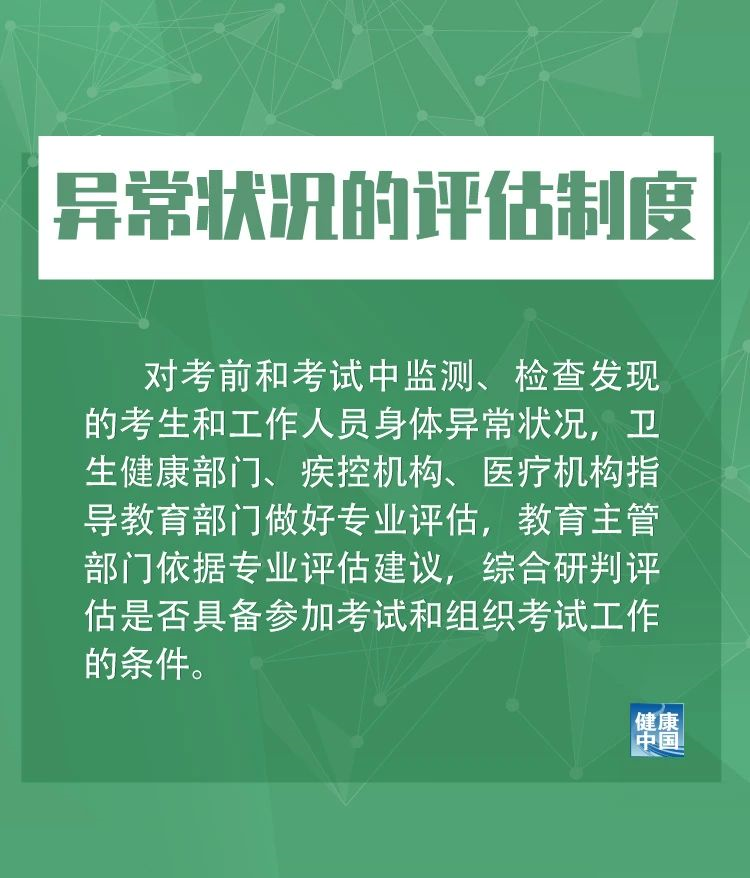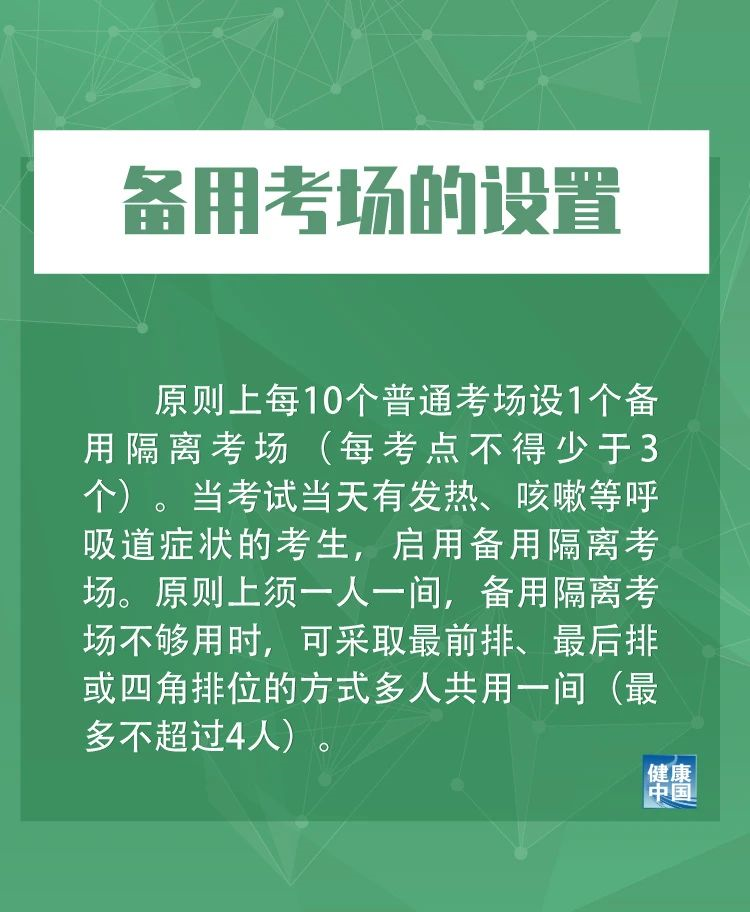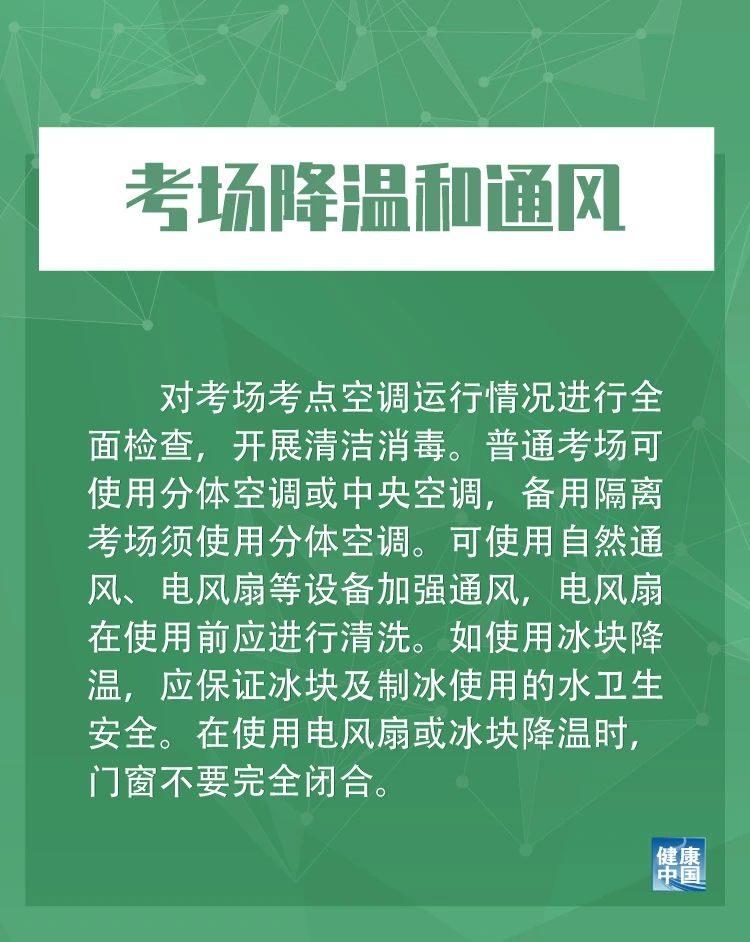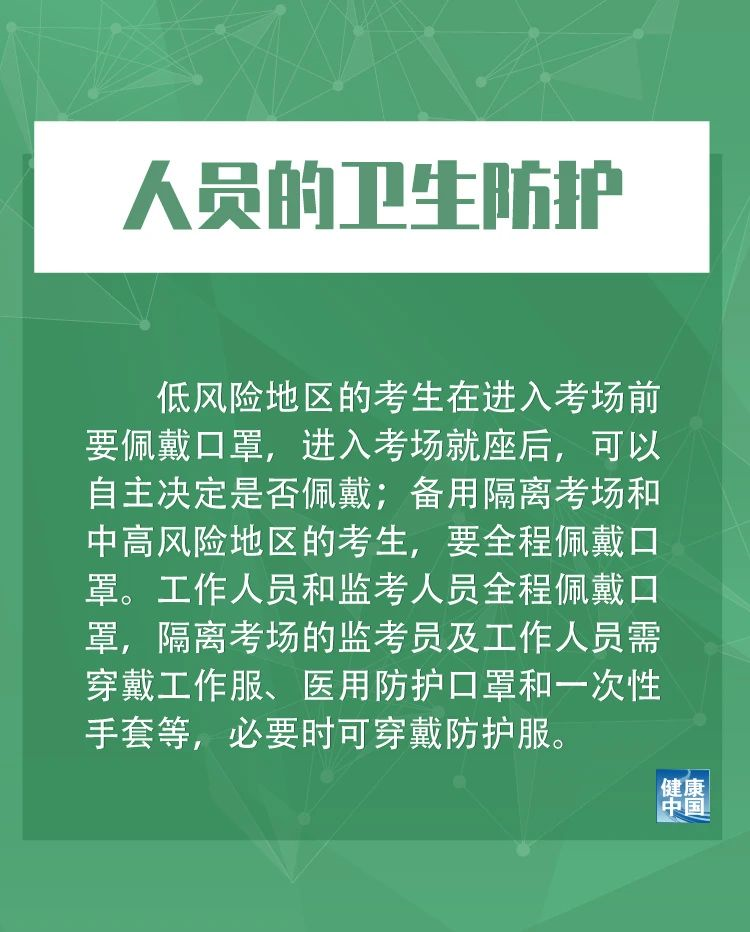Personnel health monitoring For the staff and candidates participating in the group test and invigilation links, daily body temperature measurement and physical health monitoring are required 14 days in advance, so as to measure and record daily body temperature.
Preparation for self-protection Before the exam, candidates should conduct self-health monitoring to ensure that they are in good physical condition during the exam, and prepare masks, gloves, tissues, quick-drying hand disinfectants and other protective materials in advance. When taking a private car, walking or riding a bicycle, you don’t need to wear a mask; if you take public transportation, you need to wear a mask all the way, and you can wear disposable gloves, and do good hand hygiene, and pay attention to social distance.
The evaluation system for abnormal conditions. For the abnormal conditions of candidates and staff found in the monitoring and inspection before and during the test, the health department, disease control institution, and medical institution instruct the education department to do a professional evaluation, and the education authority shall follow the professional evaluation recommendations. Comprehensive research and judgment evaluate whether they have the conditions to take the examination and organize the examination work.
The temperature of the test center is set at the entrance of the test center to measure the temperature of all persons entering the test center, and all candidates and test staff can enter the test center with a temperature lower than 37.3°C. At the same time, a pergola and a re-examination room for persons with abnormal body temperature are provided for the waiting and re-examination personnel to use
Treatment of abnormal body temperature at the entrance of the test center If the body temperature is unqualified, you can take a rest and use other equipment or other methods to measure again. If it is still unqualified, it must be professionally evaluated and comprehensively judged to evaluate whether it has the conditions for taking the test. , Must be arranged to take the test in the alternate isolation test room, and cannot take the test in the same test room with healthy candidates.
In principle, the setting of alternate test rooms is set up for every 10 general test rooms (each test site shall not be less than 3). When candidates have respiratory symptoms such as fever and cough on the day of the test, the alternate isolation test room will be activated. In principle, one room is required for one person. When the spare isolated examination room is not enough, multiple people can share one room (maximum 4 people) in the front row, the last row or the four corners.
Schools with environmental sanitation and disinfection epidemics cannot be used as test sites. Before the test, conduct a comprehensive environmental sanitation and disinfection of the test sites, test rooms, passages, door handles, tables and chairs, dormitories, etc., at least one thorough sanitation cleaning and at least one preventive disinfection, ventilation after disinfection, and clear signs of completion. In low-risk areas, preventive disinfection of the examination room after the end of each day; non-low-risk areas after the end of each examination.
Cooling and ventilation of the examination room conduct a comprehensive inspection of the air conditioning operation of the examination room, and carry out cleaning and disinfection. Split air conditioners or central air conditioners can be used in ordinary examination rooms, and split air conditioners must be used in standby isolated examination rooms. Natural ventilation, electric fans and other equipment can be used to enhance ventilation, and electric fans should be cleaned before use. If ice cubes are used for cooling, the ice cubes and the water used for ice production should be hygienic and safe. When using electric fans or ice cubes to cool down, do not completely close doors and windows.
Disposal of abnormal conditions during the examination. Those with respiratory symptoms such as fever and cough during the examination shall be conducted by professionals from the local health department, disease control institution and medical institution at the test site.
Candidates who conduct case-by-case research and have the conditions to continue to complete the examination must arrange for the examination in the alternate isolated examination room
test. Candidates are transferred from the ordinary examination room to the alternate isolation examination room (not out of the test site).
The provincial enrollment examination agency approved to make up. When the subject test is over, the professionals in charge of research and judgment will briefly explain and explain to all candidates on the spot to avoid panic among other candidates.
Health protection of personnel Candidates in low-risk areas must wear masks before entering the examination room. After entering the examination room, they can decide whether to wear them. Candidates in alternate isolation examination rooms and medium- and high-risk areas must wear masks throughout the process. The staff and invigilators wear masks throughout the entire process. The invigilators and staff in the isolated examination room need to wear work clothes, medical protective masks and disposable gloves, and they can wear protective clothing when necessary.


















